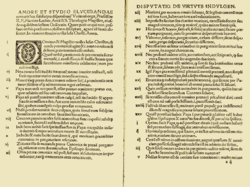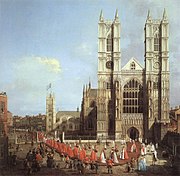
Back إصلاح إنجليزي Arabic Reforma anglicana AST Рэфармацыя ў Англіі BE Английска реформация Bulgarian Anglická reformace Czech Diwygiad Lloegr CY Reformationen i England Danish Αγγλική Μεταρρύθμιση Greek Angla Reformacio EO Reforma anglicana Spanish

| Part of a series on the |
| Reformation |
|---|
 |
| Protestantism |
| Part of a series on |
| Anglicanism |
|---|
 |
|
|
| Part of a series on the |
| History of the Church of England |
|---|
 |
The English Reformation took place in 16th-century England when the Church of England was forced by its monarchs and elites to break away from the authority of the pope and the Catholic Church. These events were part of the wider European Reformation, a religious and political movement that affected the practice of Christianity in Western and Central Europe.
Ideologically, the groundwork for the Reformation was laid by Renaissance humanists who believed that the Scriptures were the best source of Christian faith and criticized religious practices which they considered superstitious. By 1520, Martin Luther's new ideas were known and debated in England, but Protestants were a religious minority and heretics under the law. The English Reformation began as more of a political affair than a theological dispute.[note 1] In 1527, Henry VIII requested an annulment of his marriage, but Pope Clement VII refused. In response, the Reformation Parliament (1529–1536) passed laws abolishing papal authority in England and declared Henry to be head of the Church of England. Final authority in doctrinal disputes now rested with the monarch. Though a religious traditionalist himself, Henry relied on Protestants to support and implement his religious agenda.
The theology and liturgy of the Church of England became markedly Protestant during the reign of Henry's son Edward VI (1547–1553) largely along lines laid down by Archbishop Thomas Cranmer. Under Mary I (1553–1558), Roman Catholicism was briefly restored. The Elizabethan Religious Settlement reintroduced the Protestant religion but in a more moderate manner. Nevertheless, disputes over the structure, theology, and worship of the Church of England continued for generations.
The English Reformation is generally considered to have concluded during the reign of Elizabeth I (1558–1603), but scholars also speak of a "Long Reformation" stretching into the 17th and 18th centuries. This time period includes the violent disputes over religion during the Stuart period, most famously the English Civil War which resulted in the rule of Puritan Oliver Cromwell. After the Stuart Restoration and the Glorious Revolution, the Church of England remained the established church, but a number of nonconformist churches now existed whose members suffered various civil disabilities until these were removed many years later. A substantial but dwindling minority of people from the late 16th to early 19th centuries remained Roman Catholics in England – their church organization remained illegal until the Roman Catholic Relief Act 1829.
Cite error: There are <ref group=note> tags on this page, but the references will not show without a {{reflist|group=note}} template (see the help page).